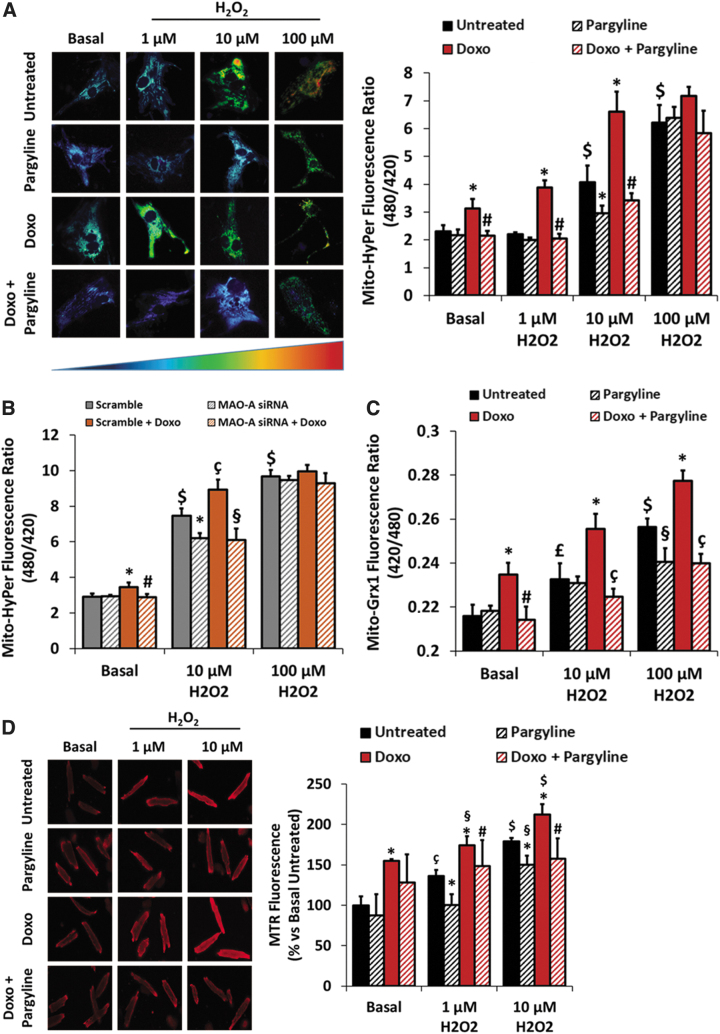FIG. 1.
Effects of doxorubicin and MAO inhibition on mitochondrial oxidative status. NRVMs have been treated with 0.5 μM doxorubicin for 24 h, in the presence or absence of 100 μM pargyline. AMVMs have been treated with 0.5 μM doxorubicin for 24 h, in the presence or absence of 200 μM pargyline. Cells have been further stimulated with increasing concentrations of H2O2 (i.e., 1–10–100 μM) for 10 min. (A) Mitochondrial H2O2 formation measured by Mito-HyPer in isolated NRVMs. *p < 0.001 versus Untreated, #p < 0.001 versus Doxo, $p < 0.001 versus Basal Untreated by one-way ANOVA with post hoc Tukey's multiple comparison test. (B) Mitochondrial H2O2 formation measured by Mito-HyPer in isolated NRVMs. Cells have been previously transfected with scramble or MAO-A siRNA. *p < 0.05 versus Scramble, #p < 0.01 versus Scramble+Doxo, çp < 0.01 versus Scramble, §p < 0.001 versus Scramble+Doxo, $p < 0.001 versus Scramble Basal by one-way ANOVA with post hoc Tukey's multiple comparison test. (C) Mitochondrial GSSG/GSH ratio measured by Mito-Grx1-roGFP in isolated NRVMs. *p < 0.01 versus Untreated, #p < 0.01 versus Doxo, çp < 0.001 versus Doxo, §p < 0.05 versus Untreated, £p < 0.05 versus Basal Untreated, $p < 0.001 versus Basal Untreated by one-way ANOVA with post hoc Tukey's multiple comparison test. (D) Mitochondrial ROS formation measured by MTR in AMVMs. *p < 0.05 versus Untreated, #p < 0.05 versus Doxo, §p < 0.05 versus Basal Doxo, çp < 0.01 versus Basal Untreated, $p < 0.001 versus Basal Untreated by one-way ANOVA with post hoc Tukey's multiple comparison test. Approximately 30 cells were analyzed per condition in each experiment, and all the experiments were performed at least three times using three different animal or cell preparations. Data are expressed as mean ± SEM. AMVM, adult mouse ventricular myocyte; GSSG/GSH, glutathione disulfide/glutathione; MAO, monoamine oxidase; MTR, MitoTracker Red; NRVM, neonatal rat ventricular myocyte; ROS, reactive oxygen species; SEM, standard error of the mean.

